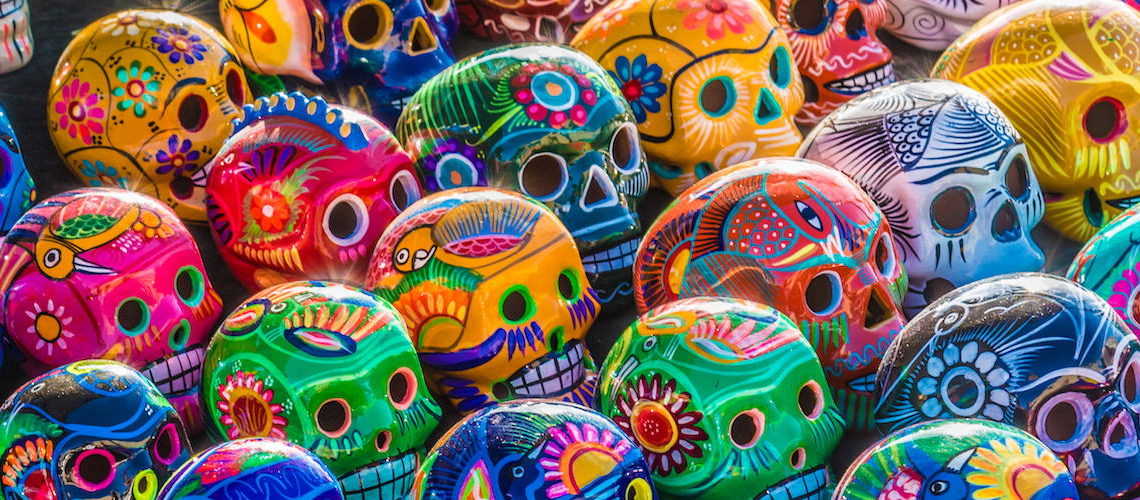
Festivals in Mexico offer a unique way to connect to the culture. These colorful celebrations are a whirlwind of activity, and it’s easy for visitors to participate. Ask your travel agent for advice on a guided trip to experience the festivities through the eyes of a local guide, or just stroll the streets and soak it all in.
Day of the Dead
From October 31 to November 2 every year, colorful altars appear in homes and public spaces throughout Mexico, particularly in the south of the country. While this three-day festival is a chance for families to honor lost loved ones, it’s more celebratory than somber. Colorful parades and processions wind through villages, and many families get together in the cemetery to eat, tell stories, and play their loved ones’ favorite songs all night long.
Respectful visitors are welcome to admire the public altars covered in food offerings and bright orange marigolds, or to walk quietly through the cemetery, which is both boisterous and hauntingly beautiful, as families light hundreds of candles to mark their loved ones’ graves.
Festival of the Virgin of Guadalupe
In 1531, the Virgin Mary is said to have appeared in Mexico with a message for a man named Juan Diego: He was to tell the bishop to build a church on the barren Tepeyac Hill. When the bishop asked for proof of the encounter, Juan Diego returned the hill to find it covered in roses. He gathered them in his cloak, and when he dropped the roses at the bishop’s feet, an image of Mary appeared on his chest where the roses had been.
This miracle of the Lady of Guadalupe is celebrated throughout Mexico every December 12, with a week or more of celebrations leading up to the main event. Community groups and families gather in processions, walking through town to gather at the church. These processions take on the feel of parades, complete with marching bands, dancing, and elaborate costumes.
It’s a religious celebration centered around the church, but there is plenty of revelry, too, with street food and dancing in the town square and elaborate fireworks displays to end the night.
Mexican Independence Day
On September 16, 1810, Mexico began its war for independence from Spain.
Today, it’s a national holiday where communities showcase their national pride. The celebration starts at 11 p.m. on the night of September 15, when the president of Mexico shouts “Viva Mexico!” at the National Palace in Mexico City. Homes and public spaces are decked out with the red-white-and green Mexican flag, and parades and fireworks rule the day on the 16th – including the national military parade in Mexico City.
It’s also a time to highlight local traditions, with school and community groups coming together to dance, sing, and reenact battles in traditional dress.
